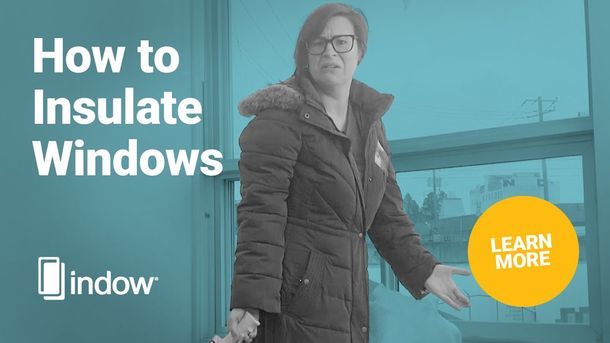Anonymous
3 Stars ⭐️⭐️⭐️⭐️⭐️

Older windows, even some newer windows, can let cold air right into your home. It happens because of cracks, failed seals, and poor insulation. If you’re trying to fix this problem by putting bubble wrap on windows, you can do better. Read on for how to keep cold air from coming through windows.
Adding bubble wrap or saran wrap to your windows does help insulate them, but not very well. And these fixes look sloppy, especially when they have to be done over each year, leaving adhesive marks or chipped paint.
What bubble wrap can’t do, is create dead air space between it and your window. That’s a big reason why double-pane windows insulate better than single-pane, the space between the panes. When trying to keep cold from coming through your windows, you want to add layers – of material AND air.

The way your house feels depends on the make-up of your house: wall and attic insulation, double or single-pane windows. All of these have an R value and a U value that together make the mean radiant room temperature.
R value measures heat resistance and U value measures heat transference. A low U value (transfer of heat) and high R value (resistance to heat transfer) is ideal for high surface temperature. Together, these give us the combined effectiveness of the materials in insulating a room and our perceived temperature.
Mean radiant room temperature expresses the influence of all surface temperatures on comfort. That’s why someone sitting next to a window can be cold while someone across the room is fine. No matter what the thermostat says, if your windows aren’t insulated, you will have a low perceived temperature and comfort level.


Give up the bubble wrap. To really keep cold air from coming through your windows and increase the perceived temperature, you need to increase insulation. You can add another layer of insulating material and air with window inserts.
Indow window inserts are made with acrylic, which insulates better than glass. They use compression tubing to create a seal around the window frame. This adds an air pocket between the insert and the window for more insulation. Because the insert is on the inside of the house, it raises the surface temperature.
Just one insert can have a huge impact on the mean radiant room temperature. Start with the coldest window

Request a Free Estimate. We'll provide you with a preliminary estimate based on your basic window dimensions. It's quick and easy!
Measure your windows with our easy-to-use laser measurement kit. We'll guide you through the simple process, ensuring a perfect fit.
Customize your inserts to match your needs and your aesthetic, with tubing colors that seamlessly blend into your space.
Transform your space with custom-crafted inserts shipped directly to your home, ready to fit perfectly in your windows.

We value safety and privacy. We will never share, sell, or rent your data to third parties not directly related to your purchase or consideration of our products. Read our full policy here.
Indow has insulated more than 23,000 buildings - helping reduce carbon emissions by nearly 200,000 tons - and creating comfort across the US & Canada!
My home is about 500 ft. from an interstate highway and had been looking for a solution to reduce the highway noise, especially 18-wheeler truck noise all night long. What pushed me to finally make a decision was the 9 month highway repair project with trucks moving back and forth with their loud beeping when going in reverse (every 20 seconds) all through the night, every week night. I opted for the acoustic inserts, which took 3 months to receive from the time of my order. I was not happy about the 3 month waiting period. I was very timely with measuring the windows which included an arched window which I had to trace. The measurement process required 10 hours of time, most of which was the tracing (including time and cost to make several trips to buy materials for this). When they finally arrived, I installed the inserts and had approximately a 30% reduction in decibel levels. After nearly $5,000 in costs, I was hoping to have had better noise reduction.